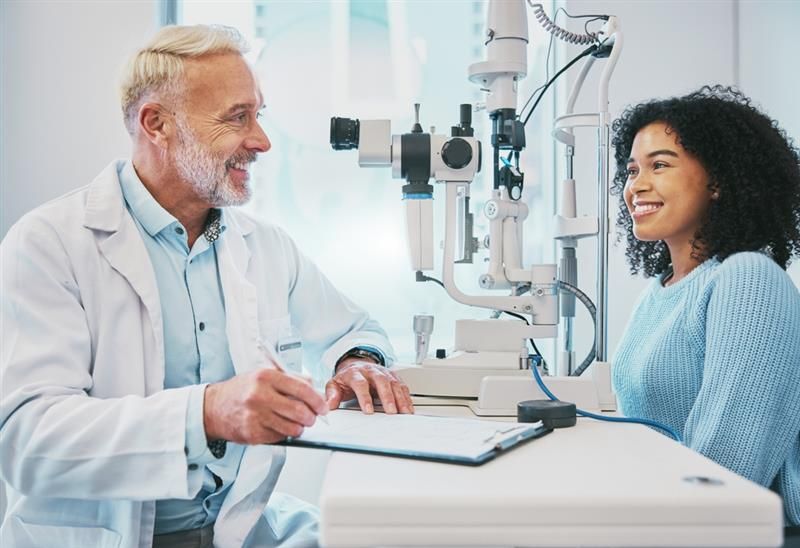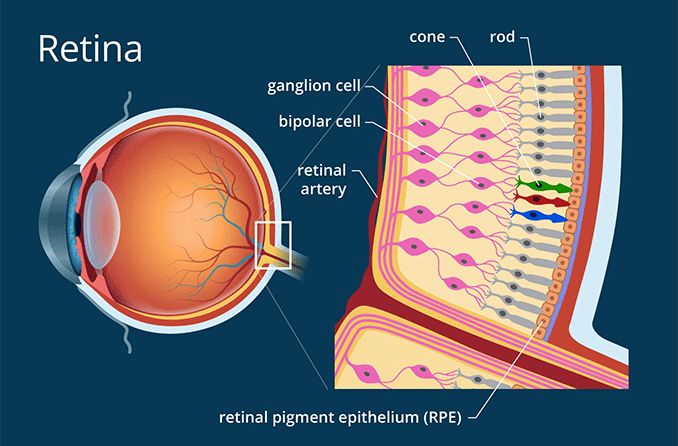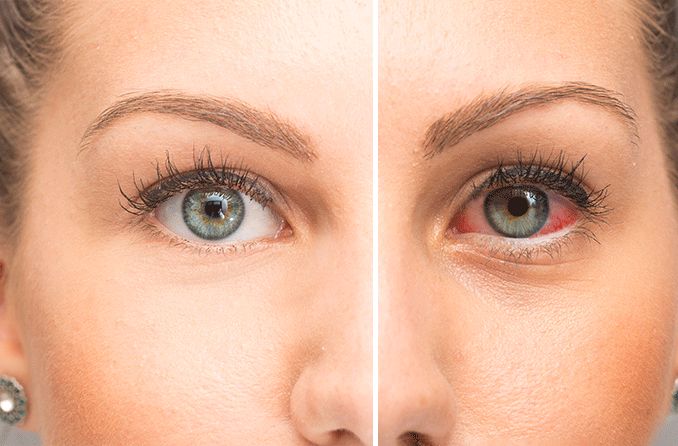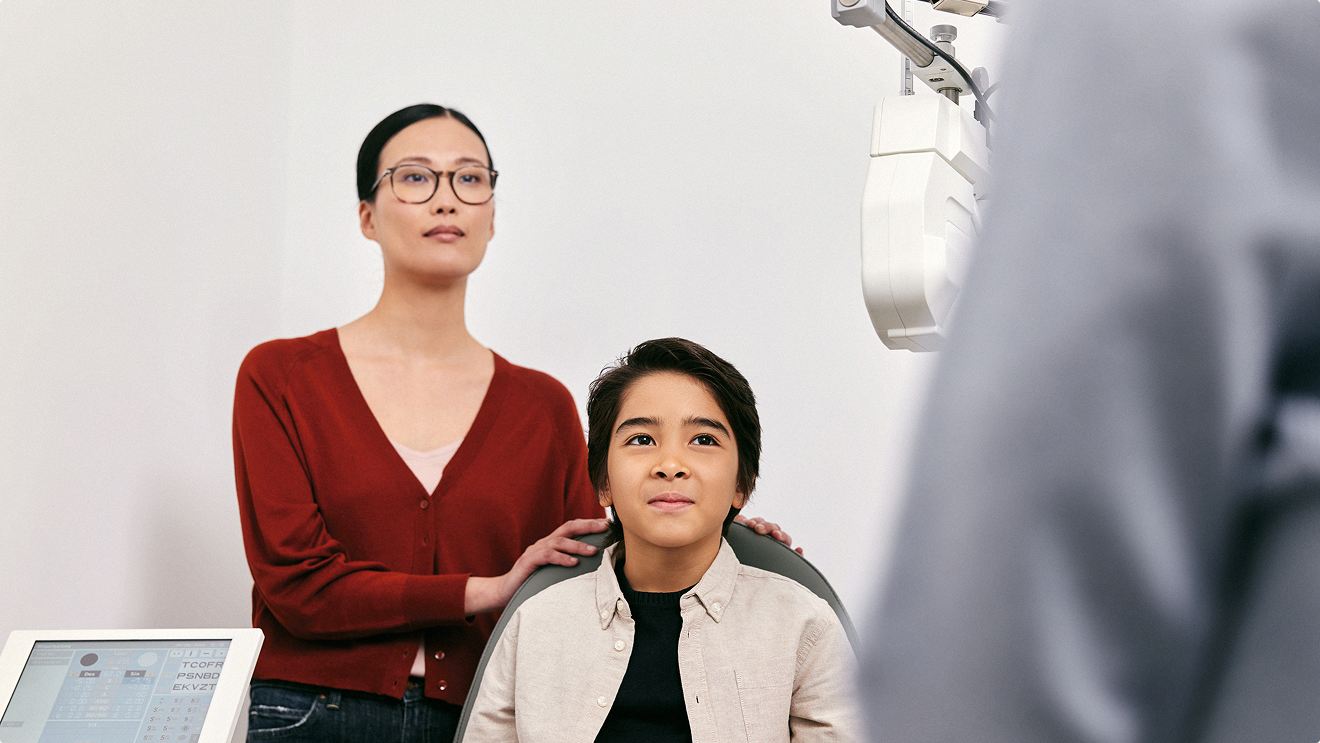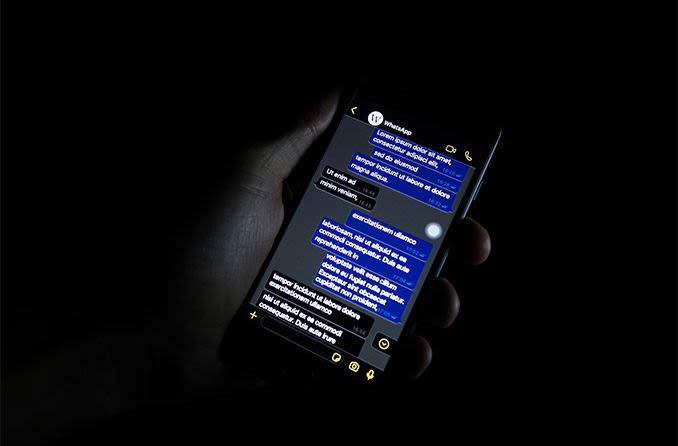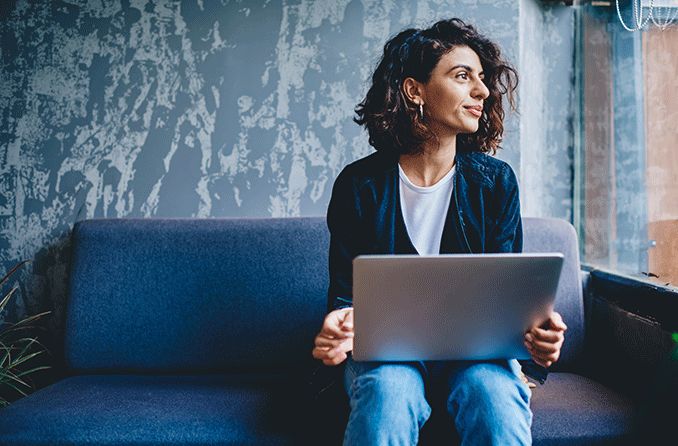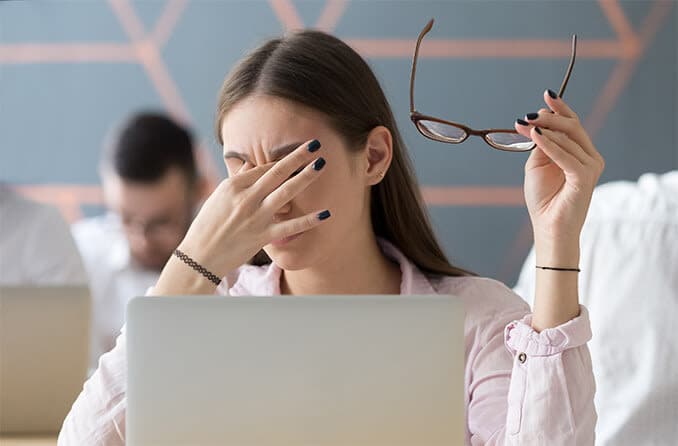Impact of smartphone screens on eye health
Smartphone usage is common among Americans. Recent data indicates that the average smartphone user:
- Checks their phone 144 times a day.
- Gets around 4.5 hours of screen time each day.
These figures underscore the addictive nature of smartphones and how easy it can be to overuse them.
Such a substantial amount of screen time can lead to digital eye strain symptoms and affect your eye health over time. Read on to learn how excessive smartphone use can be harmful to your eyes. Plus, learn what you can do to protect your vision in the long term.
What is digital eye strain from smartphones?
Digital eye strain from smartphones refers to the discomfort and problems you experience due to prolonged viewing or use of a digital screen. Though the condition is usually temporary, looking at a phone can make your eyes hurt, feel dry, or lead to other unwanted symptoms.
The high brightness of your screen, along with a strong and extensive focus on the small device can put stress on your eyes. The eyes work harder to accommodate under these conditions, leading to digital eye strain.
Causes of eye strain from smartphone use
Multiple factors can contribute to eye discomfort with smartphone use. These factors may include:
- Prolonged screen time
- Close proximity to your screen
- Poor screen positioning and posture
- High contrast between the light on your screen and the light in your environment
- Glare from a bright screen
When you’re focused on your screen, you also may not blink as much as you need to. This can contribute to eye strain and dryness.
Symptoms of eye strain from smartphone use
When the retina (the light-sensitive tissue at the back of the eye) is exposed to the bright screen of a smartphone, it can cause the following short-term effects:
- Eye strain
- Irritation
- Pain or discomfort in the eyes
- Tired eyes
- Blurred vision
- Headaches
- Dry eyes
- Watery eyes
If you find that your eyes hurt a lot when looking at phone screens, consider cutting back or modifying your smartphone usage. Consult your eye doctor if you experience additional symptoms or if your eye strain lasts for more than a few days.
Long-term effects on eye health from smartphones
A common complaint eye doctors get from patients is that their eyes hurt a lot when they look at their phone. This may be related to immediate effects of phone use listed above, like eye strain or irritation. But there are additional effects to consider, and some of these symptoms can become chronic with extended screen use.
Some research has suggested that smartphone use may be a risk factor for longer-term issues like dry eye syndrome and myopia (nearsightedness).

Dry eye syndrome
Dry eye disease (DED) occurs when your eyes don’t make enough tears or when your tears dry up (evaporate) too quickly. The chances of developing DED increase based on your age and other risk factors, including environment, lifestyle, medications and other medical conditions.
Certain studies have indicated that excessive smartphone use can lead to dry eye disease in children and adults. Though more research is needed, symptoms of dry eye syndrome are something to look out for if you spend a great deal of time on your smartphone.
Symptoms of dry eye disease include:
- Chronic eye dryness
- Stinging or burning sensation
- Light sensitivity
- Blurred vision
Once a person develops dry eye syndrome, it may continue getting worse in a cycle that is hard to reverse. To help prevent that cycle, it’s important to reduce your use of digital devices. This is one way to avoid triggering dry eye symptoms before they start.
Myopia (nearsightedness)
Focusing too closely on screens may contribute to the development and/or progression of myopia in children. When a child holds a screen too close to their face, it “trains” their eyes to focus on nearby objects. This can impair their ability to see distant objects clearly as their visual system develops.
Other health problems
Smartphones can also affect your overall health. Excessive smartphone use can impact to your productivity and concentration levels. It can also affect your posture if you look down at your phone to use it.
In addition to the effects that screen time can have on your eyes, it can also impact your mental health. Frequent social media alerts, text messages and emails can create a constant sense of urgency for smartphone users. It can be hard to detach from your smartphone, which can add to your feelings of stress and anxiety.
How to protect your eyes from smartphone screens
There are some steps you can take to prevent eye strain caused by your smartphone screen. Keep these in mind when you feel like your eyes need a break:
Remember to blink
When you’re focused on your smartphone for a long period of time, you may forget to blink. If you don’t blink as often as you need to, your eyes get less moisture and may begin to feel dry. To help prevent eye dryness and discomfort, try to blink regularly while using your phone and other digital devices.
Adjust screen brightness
Your eyes may feel tired faster if your screen is too bright. It may help to change your phone settings so the screen brightness matches the lighting in your surroundings. This can make it easier for your eyes to adjust between the screen and your environment.
You can also try the night mode or dark mode setting on your smartphone in darker environments and at night.
Use the 20-20-20 rule
To help relieve eye strain when using your smartphone, try the 20-20-20 rule.
Every 20 minutes of smartphone use, take a 20-second break from the screen. During those 20 seconds, focus on an object at least 20 feet away.
Reduce screen time
If possible, try to spend less time using your smartphone. Many smartphone applications allow you to track your screen time. Some let you set timers on your most used apps to help you limit yourself. Your phone may also have built-in screen time stats you can reference.
When it’s time to move away from the screen, try putting your phone down and doing something completely different. This may help you avoid the temptation of checking your phone during your break.
Try a blue light filter
Some people find that blue light glasses help their eyes feel more comfortable during extended periods of screen use. Applying a blue light screen protector to your smartphone may also help ease your viewing. Both types of products are designed to filter blue-violet light.
Before you purchase any new products, it’s important to note that blue light itself does not cause digital eye strain or eye disease. The best way to reduce symptoms of digital eye strain is to adjust how you’re using your smart device, as detailed above.
SEE RELATED: Computer eye strain - 10 steps for relief
Keeping your eyes healthy in the digital age
We receive a large amount of news, social interaction and entertainment through our smartphones. With so much information coming in, it can be difficult to limit screen time. But it’s important to acknowledge the eye strain that can come with excessive phone use.
To keep your eyes healthy in the digital age, try to take regular breaks from your phone and reduce your screen time as much as possible. It may help to have an alternate activity waiting to hold your attention. Instead of using your phone, you could:
- Read a book or write in a journal (digital versions don’t count!)
- Walk your dog or water your plants
- Work on a puzzle or play a board game with friends
Do phones damage your eyesight?
There is no scientific evidence that smartphones damage your vision, but they may make your eyes hurt and could lead to complications in other areas. It’s important to be aware of your usage so you can try to avoid these problems.
Take note of symptoms or discomfort you feel and see an eye doctor if they persist, even with screen breaks. Your optometrist can help you find the right relief for your symptoms and give you tips to help prevent digital eye strain from smartphone use in the future.
Whether you experience eye strain or not, it’s important to schedule routine eye exams to ensure your eyes are in good health and that your vision is sharp.
